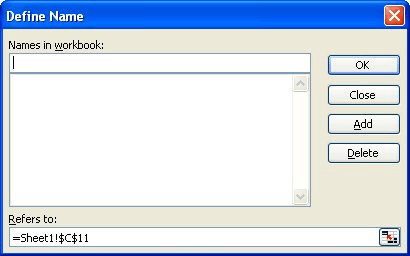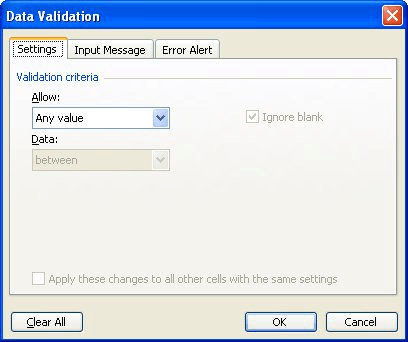Please Note: This article is written for users of the following Microsoft Excel versions: 97, 2000, 2002, and 2003. If you are using a later version (Excel 2007 or later), this tip may not work for you. For a version of this tip written specifically for later versions of Excel, click here: Contingent Validation Lists.
Written by Allen Wyatt (last updated August 15, 2022)
This tip applies to Excel 97, 2000, 2002, and 2003
The data validation capabilities in Excel are quite handy, particularly if your worksheets will be used by others. When developing a worksheet, you might wonder if there is a way to make the choices in one cell contingent on what is selected in a different cell. For instance, you may set up the worksheet so that cell A1 uses data validation to select a product from a list of products. You would then like the validation rule in cell B1 to present different validation lists based on the product selected in A1.
The easiest way to accomplish this task is in this manner:

Figure 1. The Define Name dialog box.

Figure 2. The Data Validation dialog box.
That's it. Now, whatever is chosen in cell A1 dictates which list is presented in cell B1.
ExcelTips is your source for cost-effective Microsoft Excel training. This tip (3195) applies to Microsoft Excel 97, 2000, 2002, and 2003. You can find a version of this tip for the ribbon interface of Excel (Excel 2007 and later) here: Contingent Validation Lists.

Solve Real Business Problems Master business modeling and analysis techniques with Excel and transform data into bottom-line results. This hands-on, scenario-focused guide shows you how to use the latest Excel tools to integrate data from multiple tables. Check out Microsoft Excel 2013 Data Analysis and Business Modeling today!
Need to get rid of spaces in a range of cells? There are two ways you can approach the task, as described here.
Discover MoreThe Paste Special feature in Excel can be used to uniformly adjust values and formulas. This tip shows how powerful this ...
Discover MoreEnter information into a cell, and Excel needs to figure out what type of information it is. Here's how Excel interprets ...
Discover MoreFREE SERVICE: Get tips like this every week in ExcelTips, a free productivity newsletter. Enter your address and click "Subscribe."
There are currently no comments for this tip. (Be the first to leave your comment—just use the simple form above!)
Got a version of Excel that uses the menu interface (Excel 97, Excel 2000, Excel 2002, or Excel 2003)? This site is for you! If you use a later version of Excel, visit our ExcelTips site focusing on the ribbon interface.
FREE SERVICE: Get tips like this every week in ExcelTips, a free productivity newsletter. Enter your address and click "Subscribe."
Copyright © 2025 Sharon Parq Associates, Inc.
Comments